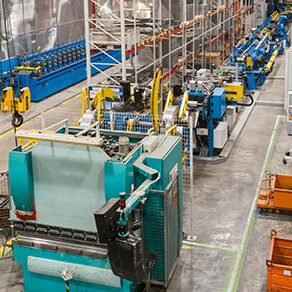
Manufacturers Must Act Now To Maximize Depreciation-related Tax Breaks for 2022
As the end of the year nears, manufacturers are looking to get the most tax bang for their buck. One proven method is to maximize tax breaks relating to depreciation. In some cases, your company may realize instant tax gratification by currently deducting the full cost of business property placed in service in 2022 — even if it occurs as late as Dec. 31.
Here are four key depreciation-related tax breaks available to manufacturers.
1. Section 179 Deduction. Under Sec. 179 of the tax code, a business entity may “expense” the cost of qualified property placed in service, up to an annual limit. However, the deduction can’t exceed the amount of income from the business activity and is subject to a phaseout above a specified threshold.
The maximum deduction is an inflation-indexed $1 million, and the phaseout threshold is an inflation-indexed $2.5 million. For property placed in service in 2022, the numbers are $1.08 million and $2.7 million, respectively.
2. 100% First-year Bonus Depreciation. This covers 100% of the cost of qualified new or used property. For these purposes, qualified property includes tangible property depreciable under the Modified Accelerated Cost Recovery System (MACRS) with a cost recovery period of 20 years or less. This type of property is often used by manufacturers.
With the combination of the Sec. 179 deduction and bonus depreciation, manufacturing companies may be able to write off the full cost of depreciable business property the first year the property is placed into service. However, be aware that the first-year bonus depreciation deduction is scheduled to begin to be phased out in 2023, allowing deductions of:
-
- 80% for property placed in service in 2023,
- 60% for property placed in service in 2024,
- 40% for property placed in service in 2025, and
- 20% for property placed in service in 2026.
After 2026, bonus depreciation no longer will be allowed unless Congress extends it. (For certain property with longer production periods, these reductions are delayed by one year.)
3. MACRS Deductions. The MACRS is generally associated with “regular” depreciation deductions. With the MACRS, the cost of qualified property placed in service is recovered over a period of years. The system is designed to provide larger write-offs in the early years of ownership and smaller deductions thereafter.
The annual deductions are based on the useful life of the property. For example, there’s a five-year write-off period for computers, while most other equipment or machinery is depreciable over seven or 15 years. Generally, a manufacturer may supplement Sec. 179 and first-year bonus depreciation deductions with MACRS deductions for any remainder.
But if you make more than 40% of the year’s asset purchases in the last quarter, you could be subject to the typically less favorable mid-quarter convention.
4. Business Vehicle Deductions. Vehicle purchases may be eligible for Sec. 179 expensing, and buying a large truck or SUV can maximize the deduction. The normal Sec. 179 expensing limit generally applies to vehicles with a gross vehicle weight rating of more than 14,000 pounds. A $27,000 limit applies to vehicles (typically SUVs) rated at more than 6,000 pounds, but no more than 14,000 pounds.
Even if you prefer to buy a smaller vehicle, you can still potentially enjoy a valuable first-year deduction. Vehicles rated at 6,000 pounds or less are subject to the passenger vehicle limits; contact us for details.
Keep in mind that additional rules and limitations apply to depreciation-related deductions. Consider all the tax ramifications of year-end purchases of business property for your manufacturing company. Contact us for more information.
